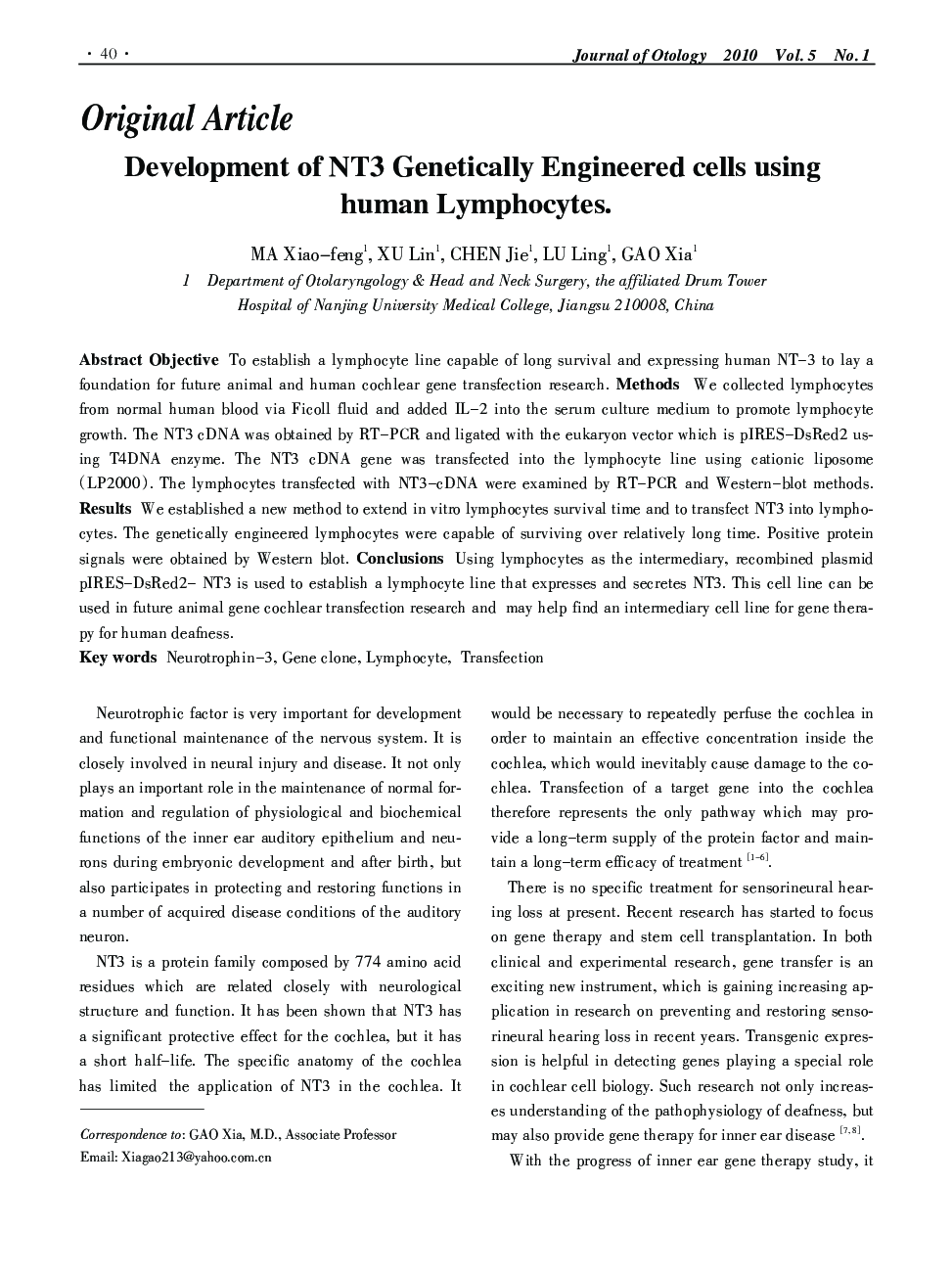| Article ID | Journal | Published Year | Pages | File Type |
|---|---|---|---|---|
| 4116800 | Journal of Otology | 2010 | 6 Pages |
ObjectiveTo establish a lymphocyte line capable of long survival and expressing human NT–3 to lay a foundation for future animal and human cochlear gene transfection research.MethodsWe collected lymphocytes from normal human blood via Ficoll fluid and added IL–2 into the serum culture medium to promote lymphocyte growth. The NT3 cDNA was obtained by RT–PCR and ligated with the eukaryon vector which is pIRES–DsRed2 using T4DNA enzyme. The NT3 cDNA gene was transfected into the lymphocyte line using cationic liposome (LP2000). The lymphocytes transfected with NT3–cDNA were examined by RT–PCR and Western–blot methods.ResultsWe established a new method to extend in vitro lymphocytes survival time and to transfect NT3 into lymphocytes. The genetically engineered lymphocytes were capable of surviving over relatively long time. Positive protein signals were obtained by Western blot. Conclusions Using lymphocytes as the intermediary, recombined plasmid pIRES–DsRed2– NT3 is used to establish a lymphocyte line that expresses and secretes NT3. This cell line can be used in future animal gene cochlear transfection research and may help find an intermediary cell line for gene therapy for human deafness.
